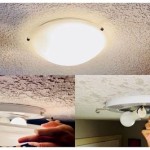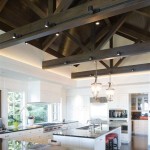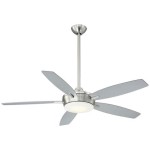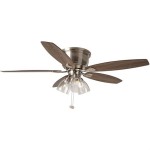Types Of Ceiling Recessed Lights
Ceiling recessed lights, also known as can lights or downlights, are a versatile and energy-efficient lighting solution that can enhance the aesthetics and functionality of any space. They offer a wide range of options in terms of size, shape, style, and features, making them suitable for various applications. Understanding the essential types of ceiling recessed lights is crucial for making informed decisions when selecting the most appropriate option for your specific needs.
Before delving into the specific types, it is essential to note that recessed lights generally consist of three main components: the housing, the trim, and the light source. The housing is the recessed part that is installed into the ceiling, the trim is the visible part that frames the light source, and the light source is the bulb or LED that emits light.
Essential Aspects of Types of Ceiling Recessed Lights
1. Housing Type
Recessed light housings come in various types, each with its own set of characteristics. Some common housing types include:
- IC-rated housings are designed for direct contact with insulation, making them suitable for use in ceilings with limited space.
- Non-IC-rated housings require a minimum clearance from insulation and are typically used in ceilings with ample space.
- Airtight housings prevent air leakage between the ceiling and the recessed light, improving energy efficiency and preventing fire hazards.
2. Trim Style
The trim style determines the appearance of the recessed light. It is available in a wide range of shapes, sizes, and finishes, including:
- Baffle trims have a cone-shaped interior that reduces glare and provides directional lighting.
- Reflector trims use a reflective surface to direct light downwards, providing a focused beam.}
- Eyeball trims allow for adjustable light direction, offering flexibility in lighting specific areas.
3. Light Source
Recessed lights can accommodate various light sources, including:
- Incandescent bulbs are traditional light sources that provide a warm, yellowish light.
- Fluorescent bulbs offer energy efficiency and a longer lifespan compared to incandescent bulbs.
- LED bulbs are the most energy-efficient option, providing a long lifespan and a wide range of color temperatures.
4. Wattage and Brightness
The wattage of a recessed light determines its brightness level. Higher wattage bulbs produce brighter light, while lower wattage bulbs provide a softer glow. It is essential to choose the appropriate wattage based on the desired lighting level for the space.
In conclusion, understanding the essential types of ceiling recessed lights is crucial for making informed decisions when selecting the most suitable option for your specific needs. By considering the housing type, trim style, light source, wattage, and brightness, you can ensure that your recessed lights effectively illuminate your space while enhancing its aesthetics and functionality.

A Full Guide To Diffe Types Of Recessed Lighting

Choosing The Right Recessed Lighting Flip Switch

Can Vs Canless Recessed Lighting Which To Choose

A Guide To Recessed Lighting 9 Trim Styles Know

Recessed Lighting Guide Lowe S

Choosing The Best Led Recessed Lighting What You Should Know Blog

Recessed Lighting The Basics Led For Beginners Lumenture

Choosing The Right Recessed Lighting Flip Switch

What Are The Differences Between Recessed Surface And Suspended Mounting Agc Lighting

Wafer Lights Vs Can Everything You Should Know
Related Posts








